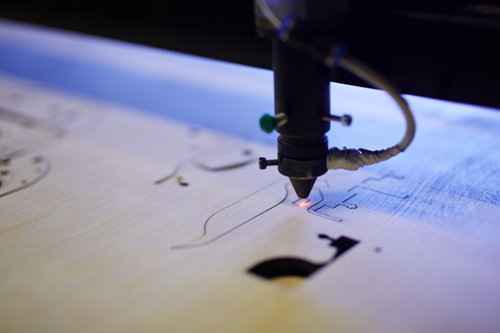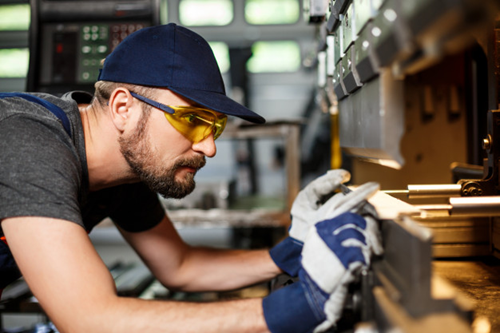While motion control is undoubtedly the key element of automation for industrial applications, the case of implementing robotics remains challenging for many companies. As you might have known, the accuracy of machine process control is crucial in manufacturing operation, something that robotic motion control implementation can help.
List of Tools for Industrial Robot Motion Control Implementation
There are tools involved in the architecture of robotic motion controls. These tools create the basic structure of the implementation:
- Motion Controller: Setting the feedback loop including the position and velocity, creating set points.
- Amplifier: Closing the velocity and position loops can generate a more precise control. You need the amplifier to accommodate the control signal transformation from the motion controller to the actuator’s electric current.
- Actuator: Hydraulic pump, servo, electric motor, air cylinder, and other linear actuators are an inseparable part of robots implementation in the manufacturing industry.
- Feedback Sensors: The main job to signal the actuating tools’ position and velocity to the motion controller so it can close position loops and velocity control loops. Some feedback sensors include optical encoders, resolvers, accelerometers, tachometers, rate gyroscopes, and so forth.
- Mechanical Components: Including gears, shafts, belts, bearings, linkage, and other mechanical parts do the hard work in transforming the actuated motion into the end motion you want to achieve.
- Interface: Accommodating the interaction between humans and the robotic motion controllers or the machines, interfaces have been in rapid development these years. Real-Time Ethernet interface and serial interface are two major interfaces used in industrial robot applications. Simple interfaces that can transmit data between controllers and devices are crucial to elevating precision.
- Artificial Intelligence: More manufacturing companies adopting AI to their robotic motion implementation. It could be such a potent tool and certainly the future of the manufacturing industry’s robotic motion implementation.
- End Effectors: The devices installed in robotic arms including a gripper, force-torque sensors, material removal tools, welding torches, collision sensors, and the tool changer itself.
How to Carry Out Motion Control Implementation for a Robot System
Using Handled Controllers
Basically, you can use handled controllers to control implementing robotics with no intelligence through wires. Button or toggle switch is used to connect battery and motors or other actuators like servo drive or hydraulic pump. You can also employ microcontrollers on robots and connect them into the input-output ports of your computer.
Using Transmitters and Receivers
Another option to employ motion control in a robot system is with wireless communication that involves the use of transmitters and receivers. The connection, by far, can be carried with infrared that uses radiofrequency(RF) to send, receive, and interpret data. The use of Bluetooth allows you to control the robot via more compact devices like laptops, smartphones, and other mobile devices.
Fully Autonomous
You can use microcontrollers in the robot to react to input from the sensors based on the programmed decision-making processes installed into the robot. The microcontroller works as the brain of implementing robotics where the program determines how it should react to particular inputs delivered from the employed sensory devices. Autonomous motion control on robot now can cater to complex sensor feedback and even use GPS working with the multiple vision sensors.
Challenges Manufacturers Face During Motion Control Implementation
Despite its prospective development, manufacturers as one of the major motion control users still face some challenges in its implementation. These include:
1. Keeping the cost low and enhancing precision is what manufacturers struggle most. The employment of new techs like automation tech, calibration device, metrology indeed improve the accuracy but they’re costly at the same time. The solution to this challenge is to employ the latest angle encoders to minimize noise and maintenance costs.
2. Maintaining high rates of constant velocity at shrinking metrology resolution now reaching nanometer is another challenge. The solutions include employing linear encoder, drive control SoC, high-performance controllers, and direct drive rotary module.
3. Choosing a suitable motion feedback solution remains challenging for manufacturers. However, you can use optical solutions for high accuracy applications and nonoptical solutions(capacitive, inductive, and magnetic) for applications with less accuracy.
4. Safety issues remain challenging in an environment where robots and humans working together. Creating a functional yet safe motion control design should be more embraced by manufacturers with the functional safety certification process.
Not only that the metrology resolution is shrinking, but the motion control systems also become more specialized to cater to specific needs in manufacturing industries. Component manufacturers should extend their cooperation with engineers for new solutions.
Final Thoughts
The motion control implementation for the robotic system for the manufacturing industry has promising developments and challenges at the same time. There are already tools and workable ways to implement industrial robotics but the manufacturer should keep up with new solutions for remaining challenges. Follow more updates and information about robotics and motion control on Technogog.



